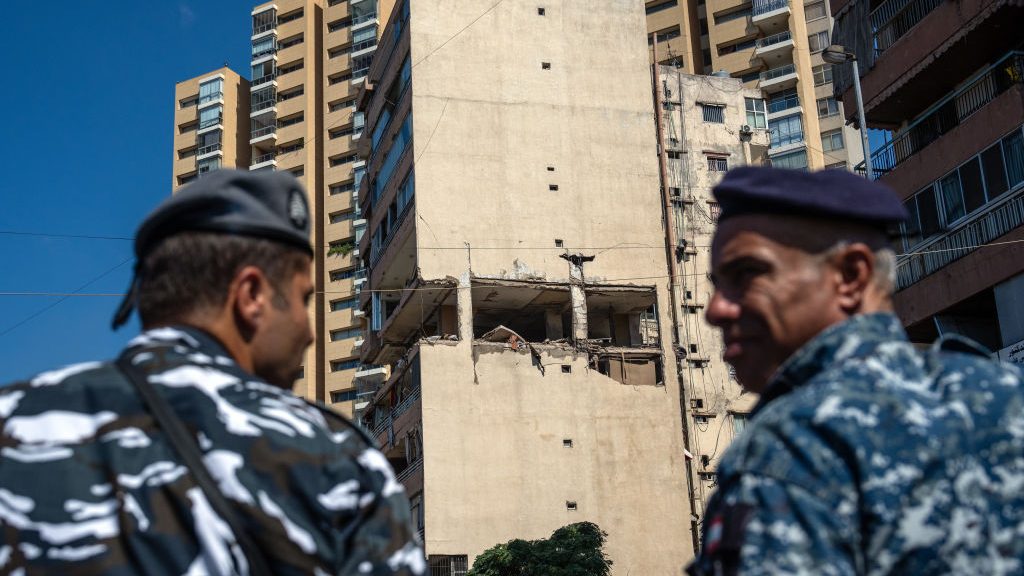Lebanon Conflict: Current Situation – A Complex and Evolving Crisis
The situation in Lebanon remains incredibly volatile and complex, a far cry from the relative stability the country once enjoyed. Understanding the current conflict requires examining its multifaceted nature, encompassing political instability, economic collapse, and social unrest. This article provides an up-to-date overview of the key issues shaping the Lebanese crisis.
The Political Landscape: A Power Struggle
Lebanon's political system, a delicate balance of power-sharing among different religious communities, has largely collapsed. The ongoing power vacuum, exacerbated by deep-seated sectarian divisions and external influences, continues to hinder any meaningful progress towards stability.
Key Political Challenges:
- Government Dysfunction: The formation of a stable and effective government remains elusive, with frequent political gridlock and power struggles among various factions.
- Sectarian Tensions: Deep-rooted sectarian divisions, fueled by competing political interests, continue to undermine national unity and hinder consensus-building.
- External Interference: Regional powers exert significant influence on Lebanese politics, further complicating efforts to resolve the crisis. This interference often exacerbates existing tensions and undermines internal reconciliation efforts.
Economic Collapse: A Humanitarian Crisis
Lebanon's economic crisis is arguably the most pressing issue facing the country. Years of mismanagement, corruption, and political instability have led to hyperinflation, widespread poverty, and a humanitarian emergency.
The Economic Fallout:
- Hyperinflation: The Lebanese pound has dramatically devalued, leading to soaring prices and making basic necessities unaffordable for many.
- Widespread Poverty: A significant portion of the population lives below the poverty line, struggling to access food, water, healthcare, and education.
- Brain Drain: The economic crisis has triggered a mass exodus of skilled workers and professionals, further weakening the country's human capital.
Social Unrest: Protests and Instability
The economic hardship and political dysfunction have fueled widespread social unrest. Protests and demonstrations have become a common occurrence, reflecting the deep frustration and anger of the Lebanese population.
Social Impacts:
- Protests and Demonstrations: Regular protests and demonstrations highlight the widespread discontent with the government and the dire economic situation.
- Social Fragmentation: The crisis has exacerbated existing social divisions, leading to increased tensions and polarization within society.
- Limited Access to Essential Services: Many Lebanese citizens struggle to access basic services like healthcare and education due to the economic collapse.
International Involvement and Potential Solutions
The international community is playing a crucial role in providing humanitarian aid and supporting Lebanon's recovery efforts. However, lasting solutions require addressing the root causes of the conflict, including political reforms, economic restructuring, and tackling corruption.
Paths to Resolution:
- Political Reform: Implementing meaningful political reforms is essential for establishing a more inclusive and representative government.
- Economic Recovery: A comprehensive economic recovery plan is necessary to address the widespread poverty and restore economic stability.
- International Cooperation: Continued international support and cooperation are crucial for providing humanitarian aid and supporting Lebanon's recovery.
Conclusion: A Long Road to Recovery
The situation in Lebanon remains precarious. The intertwined challenges of political instability, economic collapse, and social unrest demand a multi-pronged approach that addresses the root causes of the crisis. The path to recovery will be long and arduous, requiring sustained international support, meaningful political reforms, and a commitment from all stakeholders to build a more stable and prosperous future for Lebanon. For further updates and in-depth analysis, you can refer to reputable news sources such as the , , and the .
